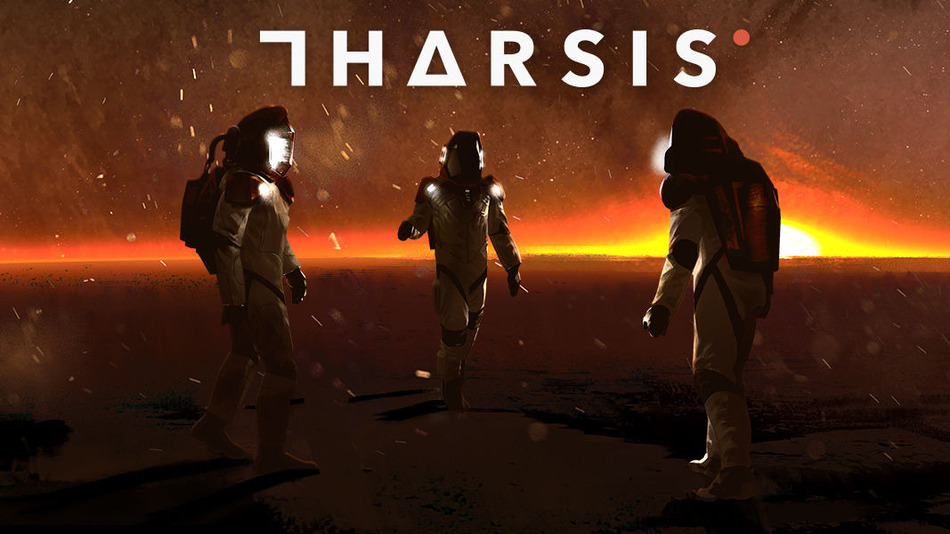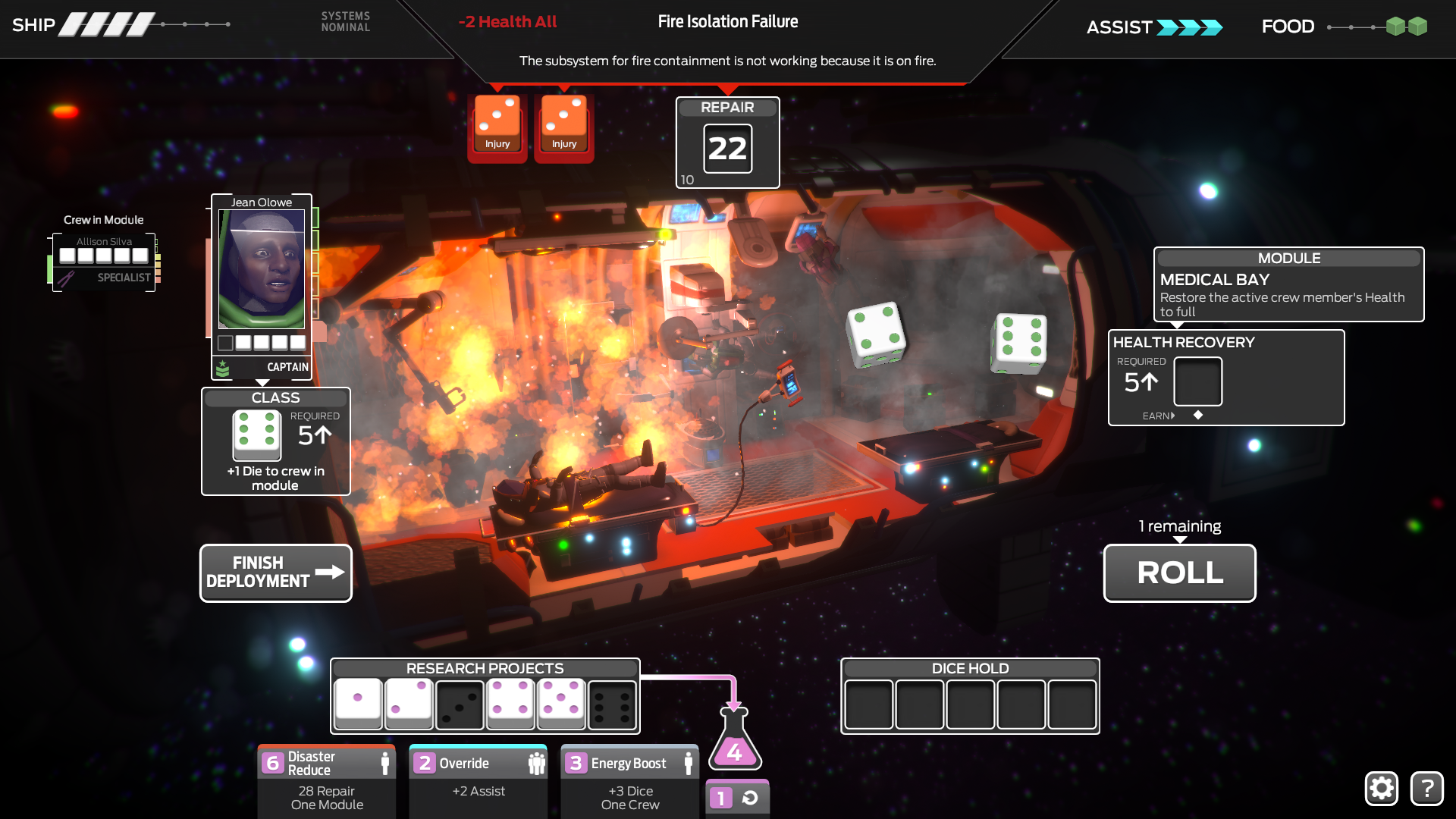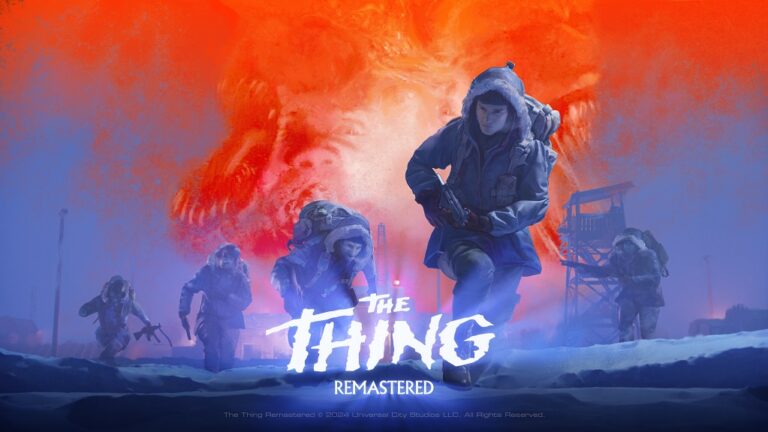
Space. No one can hear you scream in that vast ocean of darkness that envelops the unknown.
When Tharsis’ story begins, a group of astronauts is sent on an expedition to Mars. Things quickly go south and their ship is left crippled, stranded in the middle of space. The mission is to survive as you reach the planet. But actually getting there will now be a monumental challenge due to a multitude of complications. Oh, and there’s cannibalism, too.

One of the crew is dead from the resulting preliminary damage and it’s up to the remaining team to survive and make it through the 10-weeks long voyage to Mars. Each week plays out as a round in this horror-tinted, dice-based strategy game of survival. You not only have to worry about your ship’s survival, but also each crew member’s (indicated by health bars and a stress meter). And, of course, you also have to worry about food.
Each character starts out with a certain number of dice and assigned attributes. You have the engineer that can, when you end up with a 5 value or higher after you roll, add one block of health to the ship’s life bar. You have a doctor that can do the same, but for the team members in her block of the ship. The ship itself is separated into modules, each can sustain damage that you’ll have to attend to. Fixing the ship requires hitting a certain value indicated on the damaged module(s). Don’t be surprised if sometimes you’ll have to worry about multiple modules simultaneously. Not only that, but damaged modules could also result in reduced health and food supply if they’re not fixed by the time the round is over.

Tharsis is one of the few games I’ve played in recent memory that continues to teach me more about itself the more I play it. With each death and each restart, I learn more about its mechanics and all its intricacies. I learn how to use certain characters to better suit their abilities. And I learn how to better utilize the dice. As aforementioned, the dice help bring down the damage value in each module (with the goal being to hit 0 of course), but they also serve other functions. Each round will have certain criteria that could be met by achieving indicated values. Say, for example, “no movement damage.” When you hit the value for that, your characters are free to move around the ship (each can only be moved once each round) without having to worry about sustaining damage. Usually, when a character has to go through a damaged module to get to another one past it, they sustain damage. There’s a lot to mentally juggle in this game.
The story itself is suitable for the type of game this is. It starts showing its true, eerie nature the deeper you delve into it. Horror also comes from the inclusion of cannibalism. Remember that dead crew member I mentioned at the beginning of the review? Yeah, well, his body is stored and you can eventually opt to take part in cannibalism to replace normal food supply, or lack thereof. The same applies for any other team members that die. Food and cannibalism will add more dice to your inventory. The more dice each character has, the better, because as you get closer to Mars, the damage sustained to the ship becomes quite substantial.
Tharsis was a pleasant surprise for me. I went into it thinking I wasn’t going to enjoy it, especially with the luck-based nature of its dice-rolling mechanics. I was quite frustrated with it early on. But then I learned the game more and more and ended up really loving it. Through all the deaths I suffered, I still felt compelled to immediately start another playthrough. It gave me that “just one more round” feel. There’s quite an addictive nature to the game’s punishing challenge, and I absolutely adore that. Tharsis is my Bloodborne of 2016 so far, and that should say a lot about my experience with the game.
 (9 / 10)
(9 / 10)
 (9 / 10)
(9 / 10)
 JBoc924
JBoc924


